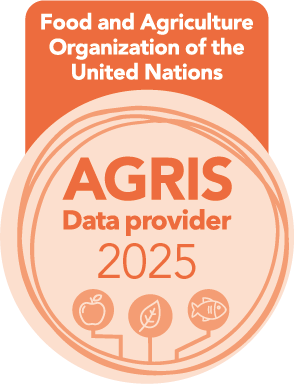A Quantitative Study on Indigenous Medicinal Plants used by Tribes of Kerala
DOI:
https://doi.org/10.26725/JEE.2016.3.28.5695-5702Keywords:
Indigenous Medicinal Plants, Quantitative factors, Idukki district, KeralaAbstract
A quantitative study of indigenous medicinal plants with detailed documentationamong tribal people was carried out in Idukki Wildlife Sanctuary, Idukki District, Kerala State. Nine tribal settlements were selected for the study based on the area and availability of information. Accordingly 120 informants were selected purposively. Direct observation, semi structured interview and group discussion were used to collect the data from the informants. The collected data was analysed using Micro-soft Excel spreadsheet 2010 and summarized using descriptive statistical methods. Five different quantitative statistical tools such as Relative Frequency of Citation (RFC), Use value (UV), Relative Importance Index (RI), Relative Importance Index (RI), Fidelity Level (FL) and Informants’ Consensus Factor (ICF) were analysed with score. Acacia caesia (L.) Wild had the highest RFC with rank I,; Adhatoda beddomei C.B. Clarke gave the highest use value with the maximum number of medicinal purposes (four). A majority of species were found to be most used among the community. The highest level of ICF was obtained for urological ailments (UA) followed by gynaecological ailments (GAA) and Dermatological ailments (DA) in that order.References
Ajesh, T.P, Naseef, S.A.A, & Kumuthakalavalli, R. (2012). Ethnobotanical documentation of wild edible fruits used by Muthuvan tribes of Idukki, Kerala- India. International Journal of Pharma and Bio Sciences, 3(3): 479 – 487.
Cordell, G.A. (2000). Biodiversity and drugs discovery - a symbiotic relationship. Phytochemistry, 55: 463- 468.
Gazzaneo, L.R.S., Lucena, R.F.P. & Albuquerque, U.P. (2005). Knowledge and use of medicinal plants by local specialists in a region of Atlantic Forest in the state of Pernambuco. Journal of Ethnobiology & Ethnomedicine. 1- 9.
Pushpangadan, P., Rajasekharan, S. & George, V. (2002). Indigenous Knowledge and benefit sharing. A TBGRI experiment in IK strategies for Kerala. Thiruvananthapuram: NSE Publication.
Runyoro, D.K.B., Ngassapa, O.D., Matee M.I.N., Joseph, C.C. & Moshi, M.J. (2006). Medicinal plants used by Tanzanian traditional healers in the management of Candida infections. Journal of Ethnopharmacology,106, 158 -165.
Simon, S.M., Norman, T.S.J., Suresh, K. & Ramachandran, V. (2011). Ethnomedicinal plants used by the Urali tribes of Idukki District, Kerala which are hitherto un-reported in codified Ayurveda system of medicine. International Journal of Research in Ayurveda and Pharmacy, 2(2) 469-472.
Sudeesh, S. ( 2012). Ethnomedicinal plants used by Malayaraya tribes of Vannapuram village in Idukki, Kerala, India. Indian Journal of Science and Technology. 1(1):7-11
Tardio, J. & Pardo-de Santayana, M. (2008). Cultural importance indices: a comparative analysis based on the useful wild plants of southern Cantabria (Northern Spain). Economic Botany. 62, 24–39.
Thirumalai, T., Kelumalai, E., Senthilkumar, B. & David, E. (2009). Ethnobotanical study of medicinal plants used by the local people in Vellore District, Tamilnadu, India. Ethnobotanical leaflets 13, 1302–1311.
Zashim Uddin. M. & Abul Hassan, M. D. (2014). Determination of informant consensus factor of ethnomedicinal plants used in Kalenga forest, Bangladesh. Journal of Plant Taxonomy. 21(1): 83-91, 2014
Downloads
Published
How to Cite
Issue
Section
License
Authors who publish with JEE agree to the following terms:
- Authors retain copyright and grant JEE right of first publication with the work simultaneously licensed under a Creative Commons Attribution License that allows others to share the work with an acknowledgement of the work's authorship and initial publication in this journal.
- Authors are able to enter into separate, additional contractual arrangements for the non-exclusive distribution of the journal's published version of the work (e.g., post it to an institutional repository or publish it in a book), with an acknowledgement of its initial publication in this journal.
- Authors are permitted and encouraged to post their work online (e.g., in institutional repositories or on their website) prior to and during the submission process, as it can lead to productive exchanges, as well as earlier and greater citation of published work (See The Effect of Open Access).
Extension Education Society
https://creativecommons.org/licenses/by-nc-sa/4.0/
This work is licensed under a Creative Commons Attribution-NonCommercial-ShareAlike 4.0 International License.













.png)

